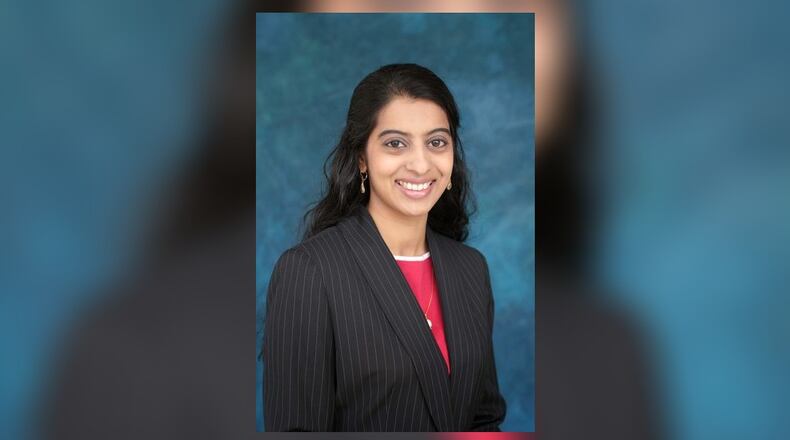—Clark Countians are diagnosed with lung cancer at a 37 percent higher rate and die at a 30 percent higher rate than Americans as a whole.
—Those at highest risk are African American males, who are 16 percent more likely to die of lung cancer than their white counterparts.
The good news?
On Saturday, May 11, thoracic surgeon Dr. Soumya Neravetla enlisted the help of those ideally positioned to make a difference in the local battle against lung cancer.
»MORE STAFFORD: Commentary: Shopping detour with wife sparks interest in expensive shoes
The North High School graduate who practices with her surgeon father was the medical speaker at the 15th annual Sisters for Prevention Cancer Awareness Luncheon and Style Show at the Champions Center at the Clark County Fairgrounds.
The biggest news she shared - and she hopes the Sisters will spread the word about — is a relatively new development in the field.
“Until about three years ago, we didn’t have the option to screen patients for lung cancer,” Dr. Neravetla said.
Because of that shortcoming, lung cancer, which often shows no early symptoms, has typically been diagnosed after it has spread and produced symptoms in other parts of the body. By then, the doctor said, “the chance of cure becomes harder.”
Cases occasionally were caught in patients who were given CT scans mostly in emergency room visits for other issues, she said, but a standard scan wasn’t a good idea for the largest risk group.
»STAFFORD: Slain Springfield man's family embraces his spirit to 'keep on' with life without him
CT scans are considered “a lot of radiation to put a smoker through each year,” she said, something likely to do more harm than good.
A solution appeared with lower resolution CT scans, which have the double advantage of rarely missing a cancer and exposing patients to less radiation.
Although the test “does generate a few unnecessary biopsies” because it sometimes produces false positives, the tradeoff is the ability to diagnose the disease earlier when surgical removal is most likely to produce a cure.
Neravetla calls it “a game-changer,” but adds, “it’s only valuable if you’re getting it done, and the awareness isn’t there.”
Neravetla said most insurances and Medicare cover the cost of the test for those at risk - long time smokers and former regular smokers in the 15 years after they have quit. Screenings are recommended for smokers who have smoked a pack a year for 30 years or two packs a year for 15 years, in short, any combination of smoking and time that produces a 30-pack history.
»STAFFORD: Springfield mom who lost son in violent crime helps others in pain
Neravetla said advancement in robotic surgeries have allowed patients to more quickly recover from their lung cancer surgeries and more quickly move on to follow-up radiation or chemotherapy.
But she also has helped to organize a community-wide effort to pare down the time between the moment a screening is scheduled and the time treatment begins. Working with others in the medical community who are involved with all the steps of diagnosing and preparing patients for treatment, her goal is for the community to move patients from screening into treatment “in under six weeks.”
Across the region and nation, she said, the standard is three to four months.
“Closing that gap can really make a difference,” she said.
Because of a history of mistrust of the medical system and other issues, Neravetla said getting African American males into that system is a significant challenge that needs to be addressed - one she hopes the Sisters can help with.
If that happens in the African American and wider community, the hard facts about lung cancer in Clark County might change in a way that will make everyone breathe easier.
About the Author
